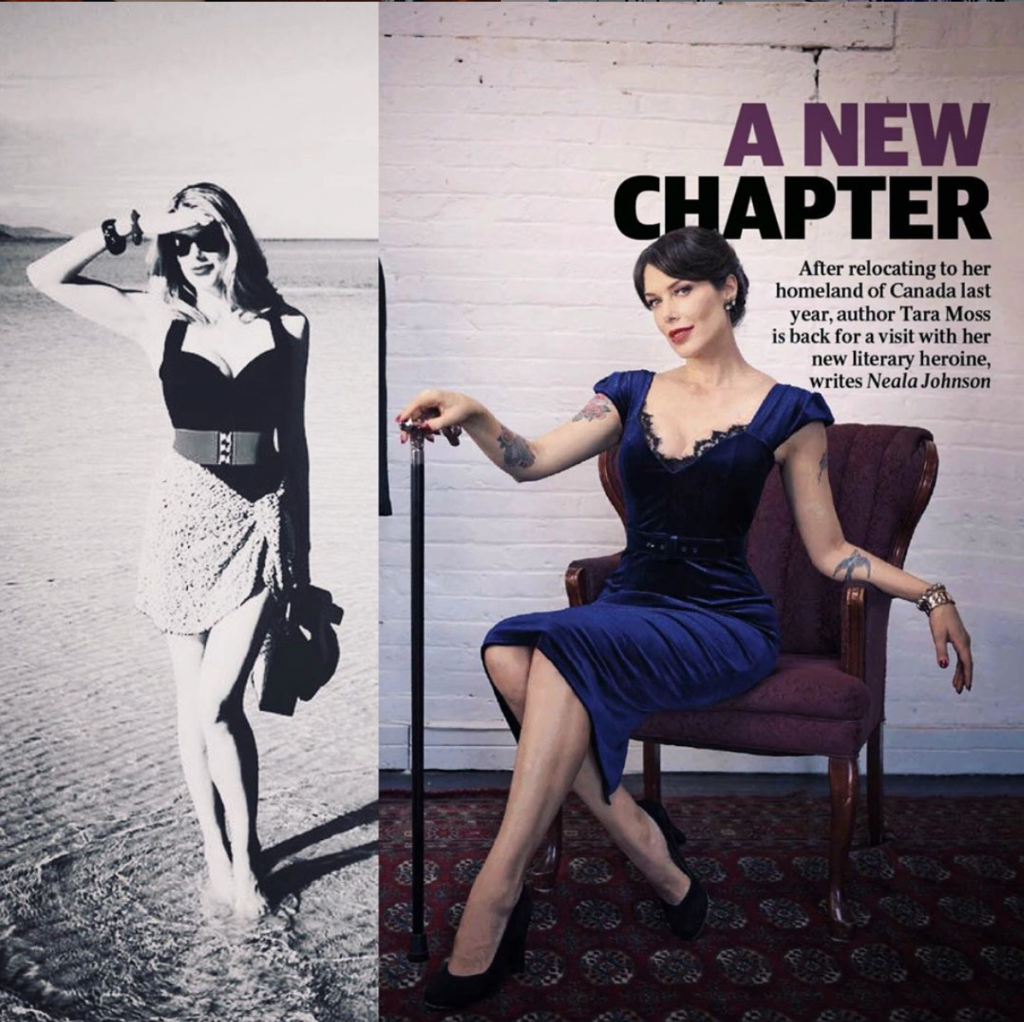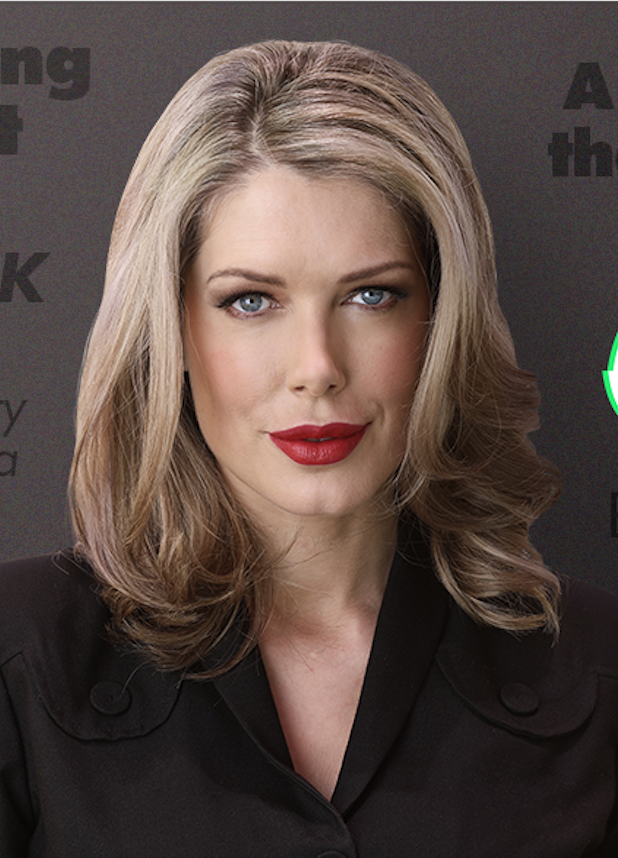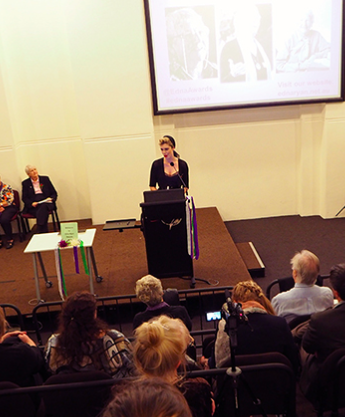Did you know that July is Disability Pride Month? What better time to write a few words on being a disabled woman and taking pride in my damn fine walking stick, ‘Wolfie’.
Many people with disabilities, injuries, chronic illness, or simply age, benefit from the use of a mobility aid. For some, however, the transition to using mobility aids may be a tough, due to stigma in the community, negative attitudes in their family, or internalized ableism. Mobility aids make disability more visible, and ableism – that is, negative or derogatory attitudes and discrimination against people with disabilities – is so rife in common language and practices, that comfort with using aids publicly can be something that takes practice, and pride.
Multiple studies show that stigma and embarrassment are still major obstacles to mobility aid use. (See Research highlights reluctance to use mobility aids due to others’ perceptions, as well as Stigma, Embarrassment and the Use of Mobility Aids, and Perspectives on Use of Mobility Aids in a Diverse Population of Seniors: Implications for Intervention) This means many who would otherwise benefit from mobility aids don’t use them, or won’t leave the house with them, and therefore experience more pain, falls risk or other health issues, and less public participation and freedom than they would otherwise. (*It’s also vital to make spaces more accessible, but that’s a whole other blog…)
In short, it’s important to de-stigmatize disability, and mobility aid use.
So although I also post about these topics at Tara and Wolfie (named for my fav walking stick, ‘Wolfie’), as it’s Disability Pride Month it feels like a good time to write a short blog answering some of the simple questions I am asked almost daily by people who are new to mobility aids and want to give them a try.
FAQS:
People often contact me privately to ask me if they are ‘disabled enough’ to use an aid.
I am here to tell you what others have kindly explained to me in the past:
If you can benefit from using a mobility aid, you have the right to use one. That is what they exist for.
There are literally thousands of illnesses, disorders, congenital disabilities, impairments, and injuries that can require or be helped by the use of mobility aids. These include but are by no means limited to things like low vision, muscle weakness, POTS, EDS, nerve injury, chronic pain, chronic fatigue, fibromyalgia, dysautonomia, MS, dizziness, sports injuries, falls risk, common ageing, and partial or total paralysis. Due to the nature of their condition, many who use mobility aids use different ones in different circumstances (crutches or wheelchair, cane or walker, etc), and on other days may not require one at all. The fact that so many people are surprised a person who uses a wheelchair may also be able to sometimes walk is yet another reflection of the fact that far more disabled voices and stories need to be heard in mainstream media and culture so their lives are represented with some accuracy.
Not all people who use aids have paralysis, are amputees, or are seniors.
Not all disabilities are visible to the eye. In fact, most are not.
When I was first injured (my right hip was injured in 2016, causing chronic nerve pain and mobility issues) I started out using a walking stick we happened to have around the house. It was wooden and not tall enough for me, but I used it anyway because I had access to it. In time I discovered my condition was not going to just disappear, and so I finally sought expert advice, was measured for a cane and got one that suited me far better. What a difference! Now I also use a rollator walker some days. Like many, I am a ‘different mobility aids for different days’ person. It depends on what I plan to do, and how my pain levels are that day.
When I use my rollator walker, it can look more ‘serious’ to people. In other words, I can look ‘more disabled’ than when I use my canes. In reality it’s the same me, just a different day or situation. I use what can help when I need it. You can support up to one quarter of your weight with a cane. You can support up to half of your weight with some rollators or walkers. Different situations call for different tools, as do different bodies. This should be more widely accepted and understood.
You don’t have to worry about whether you are ‘disabled enough’. If it helps, even some of the time, use it.
When I needed a rollator I had to make a mental adjustment, just as I had when I first starting using a cane. One good piece of advice I had was from a pain specialist who said, ‘If you want to, you can think of it as a piece of exercise equipment.’ Amusingly, my Fitbit thinks my walks with my rollator are ‘outdoor cycling’, presumably because of the hand grips vibration while it moves over the ground. But that comment got me thinking.
Mobility aids aid in…well, mobility. Movement.
‘Exercise’ is going to be defined differently from one person to the next, but if there is one thing mobility aids are made for, it is for movement, helping people get out more, move more, participate more, and do more. That’s what my cane does. That’s what my rollator does. That’s their design.
They are aids of freedom. It’s only ableism that sees exercise equipment as objects of strength and mobility aids as objects of weakness, or worse, a sign that you have ‘given up’. In fact, the presence of a mobility aid shows the opposite.

‘Where do you get your fabulous canes?‘
I’m often asked this. There has been something of a movement of people with disabilities making mobility aids their own through colour and personalization, or even going on to design entirely new styles. Thanks to them, there are many different reasonably affordable options now available, particularly online, where you will find rather gorgeous walking sticks for a hundred dollars or less (inc taxes and shipping), depending on your needs. If you are lucky, you may also find there is a store in your neighbourhood with good options, or your GP or occupational therapist may be able to recommend something to suit you. Consider the shape of the handle, the feeling of the grip, the weight, the manufacturers recommended user profile, and the stopper type on the cane. Mosts websites list all of the features.
I am not paid for any endorsements, but I can tell you I have canes purchased online from Neo Walk, Cavagnini and Fashionable Canes, and I love them all in different ways. You can see them in the pictures here, and the stories at my Tara and Wolfie instagram account. But before buying any canes online, for you or someone you love, make sure you get your correct measurement (see below.)
‘I want to try using a cane. Where do I start?‘
If you’ve come this far, and you think you might like to try a walking stick, read on. As I know too well, it is vital your walking stick is the correct height and type for you, and you need to use it correctly. In 5 simple steps you’ll be there.
Step #1 Wear your normal footwear.
(Some have asked, so yes, I have one height of cane for my normal cushioned shoes, and one for the cushioned high heels I wear when I am doing something special, like a shoot or author event. In reality I usually use my standard shoe and cane combo. One height is generally all that is needed.)
Step #2 Stand up with relaxed posture and your arms at your sides. Get a friend to measure, usually in inches, directly from the floor to your wrist bone, while your arm is relaxed with a slight bend at the elbow.
Step #3 Check the measurement. That measurement is the correct length for your walking stick/cane.
(For example, I require 37″ length, which is a widely available custom length. Many canes are made standard up to 36″. Others will need canes that are taller or shorter. These accommodations can be made by most shops/manufacturers.)
Step #4 Once you have your measured cane, which is appropriate for your height, weight and needs, take it in your hand. Note that the optimal way to use a cane is to hold it on the OPPOSITE side from your weaker or involved side. (It is not a crutch.) Practice moving the cane and the involved limb together, so that the tip of the cane touches down when your foot on the involved/weaker side does. This is how it provides a broader base of support for you, and distributes some weight away from the involved side.
Cindy at Adaptive Equipment Corner has a useful video (above) that demonstrates how to use a cane correctly. Physical Therapy 101 also has a helpful video illustrating how to determine the correct height for your cane, and how to use it, including on stairs. I sometimes switch sides when I stand still, and take a moment to lean on my cane, but when I walk, I always try to use it on the optimal side, as shown in the instructional videos above.
*If you find that you need more support than a cane can provide, consider speaking to your doctor or an occupational therapist about what other mobility aids might be appropriate for you, including quad canes, crutches, walkers, rollators, scooters or wheelchairs.
Step #5. And finally, Enjoy!
Use your damn fine walking stick or your mobility aid of choice with pride this Disability Pride Month and always. May it take you wonderful places…

PS I want to thank the late Stella Young and Sue Salthouse, and more recently friends Carly Findlay and Michelle Roger, and also Imani Barbarin and Alice Wong for teaching me about Disability Pride, both before I became disabled myself, and especially, afterwards. Thank you for your advocacy.






Hi Tara
Thankyou for this blog about canes.
We used to mind your dogs in the mountains but then I developed CRPS after a fall and eventually had to sell the business.
Can’t wait till your next book.